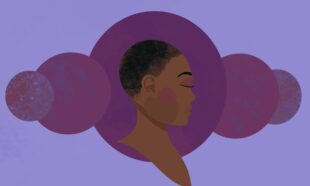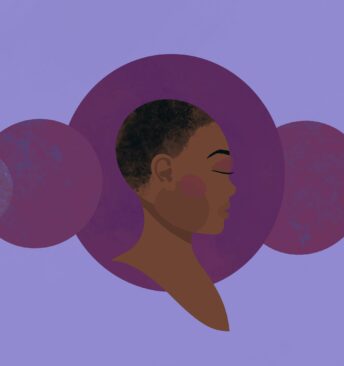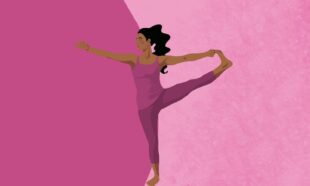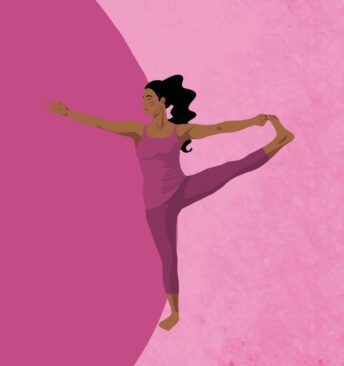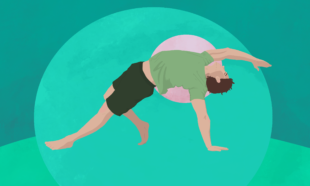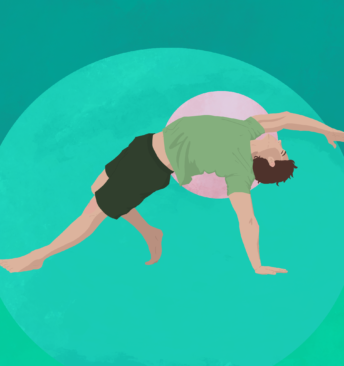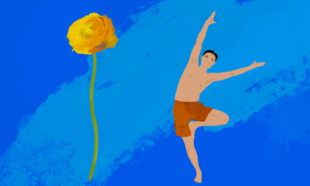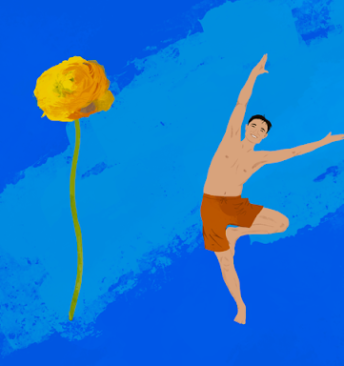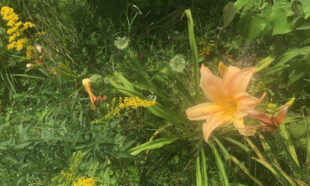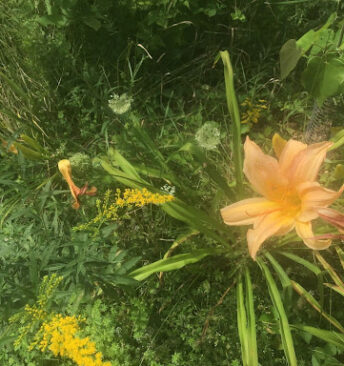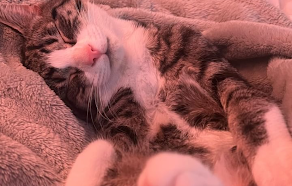Freeing the Body
Freeing the Body
Emphasize poses that enhance flexibility, release tension, and create space in the body, promoting a sense of physical freedom.
We hope that you were able to find more mental clarity last week with us at Sui Yoga and perhaps even discovered a new favorite meditation or breathwork practice. This week, join us as we explore another aspect of freedom: physical mobility and flexibility.
What is flexibility?
Flexibility is the range of movement in a joint or series of joints. Flexibility is also a specific term and can imply that one is flexible, for example, just in the legs but not in the upper body. There are three kinds of flexibility:
Dynamic or kinetic flexibility is the limbs’ ability to carry out a full range of movement while in motion – think a dancer jumping and doing a split mid-air.
Static-active, or active flexibility, is what you do in poses like extended hand to big toe pose (utthita hasta padangusthasana). Here, your thigh muscles are engaged to hold the pose while the hamstring stretches.
Thirdly, static-passive flexibility, also known as passive flexibility, is defined by maintaining positions with only your body weight or the support of your limbs or an object like a yoga block or barre. This includes many asanas like sleeping pigeon pose and lizard pose.
While muscles and skeletal structure are the most visible features of physiology, there is much more beneath the surface. The connective tissues surrounding the muscle fibers – tendons, ligaments, and fascia – also play an important role in how much you can extend your limbs.
Why care about connective tissue?
Connective tissue is in turn composed of both collagenous connective tissue and elastic connective tissue. The former provides tensile strength which is why collagen supplements are so revered for purportedly helping skin appear plump and to reduce wrinkles. Elastic connective tissues provide stretching ability, as is suggested by its name.
When the muscle fibers reach their full extension, any additional stretching happens in the connective tissue. Furthermore, the different types of connective tissue play a role in joint stiffness. According to this compilation of resources on the physiology of stretching, the the joint capsule at the ends of bones and ligaments are responsible for 47% of stiffness, closely followed by the muscle fascia which accounts for 41%. Muscle fascia has the most elastic tissue and should be the focus of your mobility journey. Other kinds of connective tissue like ligaments and tendons have the least elastic tissue and overstretching them may weaken the joints and cause destabilization which can lead to injury.
Infrared: a partner for your mobility
Did you know that Sui’s heated studios also feature red light therapy (RLT) lamps? Combined with the heat, this gives your connective tissue extra TLC. According to a 2018 review, RLT may increase collagen production in the skin (remember that collagenous connective tissue?). Another review showed that these low intensity red lights may help reduce pain for certain conditions, including osteoarthritis, fibromyalgia, non-specific knee pain, neck pain, and low back pain. Combined with the preventative and therapeutic effects of hot yoga and stretching, an hour at Sui yoga covers all your mobility bases!
How to stretch (and strengthen!)
According to a panel of experts meeting under the American College of Sports Medicine, the best way to stretch is to spend 60 seconds total on each exercise. This doesn’t have to be 60 seconds in a row but you can break this up into four 15 second holds, three 20 second holds, and so on, according to Harvard Health.
While it may seem like heated yoga is about flexibility and how far one can go in a pose, it is important to be aware of your own limits to prevent injury. Strength and flexibility are not a trade off and training both can enhance one another. When connective tissue is too weak, it is likely to become damaged from overstretching or sudden strong muscular contractions.
Engaging muscles, like with a slight bend in your standing leg during a standing split, protects the more rigid knee tendons and ligaments from overstretching. In a recent class, I appreciated how one of our teachers, Luna, instructed us to turn our knees outwards, as if we were dancing ballet, while holding a pose – this subtle movement engages the thigh muscles and protects the knees from overstretching, which is definitely helpful for me!
Yin Yoga
At Sui Yoga, you might have noticed our Sui Deep Yin and Sui Sonic Deep classes, which are yin-inspired practices that focus on longer holds. These longer holds channel the receptive and passive nature of yin energy and allow time and gravity to gently work on that muscle fascia. When a muscle is stretched, part of the muscle called the muscle spindle notes the change in length and sends a signal to the spine. This triggers the stretch reflex which attempts to resist the change by contracting the stretched muscles. The more sudden the change in muscle length, the stronger the stretch reflex contraction will be. While this seems to be contrary to flexibility, it serves the purpose of maintaining muscle tone and protecting the body from injury (thank you muscle spindle!). When you hold a stretch for a prolonged period of time in yin yoga, the muscle spindle becomes accustomed to the new length and reduces this signal. Overtime, you can use this lengthening reaction to train your receptors to allow for greater lengthening and more flexibility.
Appreciating and understanding your mobility
Form defines function is a defining rule of evolution and nature: Bluebirds have wings to fly, minnows have gills to breathe underwater, and orchid species have particular petal shapes, colors, and aromas to attract their respective pollinators. Humans have an arched spine that stabilizes us in our bipedal, upright position. While you can’t force yourself to grow gills, you can increase your stamina for swimming and freediving or build muscle mass by hitting the gym. This environment-induced change shows how the body is actually quite smart (or lazy!).
Just like how habits are like neural express lines that allow you to efficiently brush your teeth in the morning so you can save your brain power for the day ahead, the body will strengthen the muscles it uses most often: soccer-playing muscles, running muscles, hiking muscles, slouching muscles. If you have the build of a professional ballet dancer, then you might not become a sumo wrestling champion anytime soon! Nothing is good or bad but just a form of adaptation.
Your muscles also work as a whole unit, complementing and compensating for each other. For example, in a core strength routine, you might feel the effort shift from your abdominal muscles to your lower back as the former muscle group tires. Or like me, you might have strained your elbow from doing ‘chaturangas’ without engaging the larger and more resilient shoulder and upper back muscles. Without judgment, we can observe these adaptations as ways our body is trying to be helpful.
The mind-body connection
Last week we learned about how the subconscious influences our actions and habits. Conditions like anxiety and depression may be categorized under “mental health” yet they can also manifest in a host of physical symptoms including aches and pains, muscle tension, a racing heart, and lower libido among other symptoms. Just like how breathwork and meditation can allow us to connect with our subconscious, physical movement can help us process past traumas, a phenomenon that Dr. Bessel van der Kolk explores in his bestselling book, The Body Keeps the Score.
Yoga is a great practice for building awareness of how you are moving your body and what muscles you rely on or hold tension in because in each hour-long class, you have the opportunity to revisit poses and notice how they feel different each time: easier or harder, tighter or looser. This mind-body connection is also useful in meditation and for noticing where you might hold tension when you’re stressed and conversely, how refreshed your body feels after a good yoga session.
Wherever you are and however you feel this week, know that your body is trying to help you. And if you want to find a little more mobility and balanced strength, Sui is here with six styles of yoga classes for all your movement needs. We highly suggest incorporating at least one Sui Soul practice per week, this class will support wholesome alignment and strength. We hope to see you on the mat soon!
